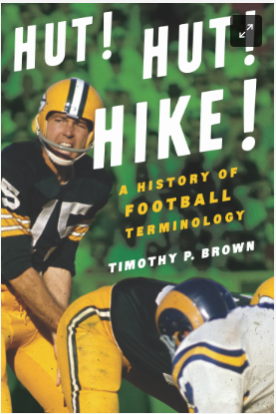The game of baseball has a long and storied history of its players, teams and managers. The stats, the championships, pitching duels and so much more make this one of the most interesting items to study and watch.
Sports History
Craig Biggio
Biggio's career numbers are staggering: 3,060 hits, 668 doubles, 291 home runs, 414 stolen bases, and a .281 batting average. He was a five-time Silver Slugger winner, a four-time Gold Glove Award winner, and a seven-time All-Star. He even achieved the near-impossible feat of joining the 3,000-hit and 400-stolen base clubs.
But Biggio was more than just stats. He was a heart-and-soul player renowned for his toughness and hustle. He'd dive headfirst into plays, battle back from injuries, and inspire teammates with his relentless energy. His dedication to the Astros earned him the unwavering loyalty of the Houston faithful, who affectionately nicknamed him "The Kid."
Beyond his on-field exploits, Biggio's legacy extends to his impact on the Astros organization. He helped build a foundation of winning in Houston, leading the team to its first World Series appearance in 2005. He's also deeply involved in community outreach, working with various charities and mentoring young players.
A Baseball Legend with a Wild Streak
Charles Radbourn was a larger-than-life figure in the early days of baseball. He was a dominant pitcher, a prolific winner, and a source of endless fascination with his unorthodox routines and flamboyant personality.
Born to Pitch:
Born in Rochester, New York, in 1854, Radbourn displayed a natural talent for throwing from a young age. He honed his skills by repeatedly throwing a ball against a barn, strengthening his arm for the future challenges of professional baseball.
Early Success:
Radbourn made his major league debut in 1880 and quickly established himself as a force to be reckoned with. He was known for his fastball, curveball, and exceptional control, which he attributed to his unconventional habit of chewing tobacco and rubbing it on the ball.
Record-Breaking Season:
Radbourn's most remarkable season came in 1884, when he won an astounding 59 games for the Providence Grays. This record stood for over 100 years and remains one of the most untouchable achievements in baseball history. He accomplished this feat by pitching a staggering 678 innings, a testament to his exceptional stamina and durability.
Unconventional Methods:
Radbourn was known for his quirky training methods and unorthodox approach to the game. He preferred to sleep in until noon, often arriving at the ballpark just moments before his scheduled start. He also had a reputation for enjoying a good drink, which some attributed to his occasional wildness on the mound.
Beyond Baseball:
Radbourn's life off the field was as colorful as his on-field exploits. He was a skilled hunter and fisherman, and he loved to gamble and tell stories. He also had a passionate side, volunteering his time to help the less fortunate.
Legacy:
Despite his eccentricities, Radbourn was a true pioneer of baseball. He helped shape the game with his innovative pitching style and his record-breaking achievements. He was inducted into the Baseball Hall of Fame in 1939, receiving recognition for his remarkable career.
Beyond Numbers:
Old Hoss Radbourn was more than just a baseball player. He was a symbol of an era, a larger-than-life personality who captured the imagination of fans and solidified his place as a true legend of the game. His story continues to inspire athletes and fans alike, reminding us that baseball is more than just statistics; it's about passion, dedication, and the thrill of the unexpected.
For more on Radbourn check out this Wikipedia bio:
Baseball's First Celebrity, Crowned in Crimson and White
His journey began in the silk mills of Paterson, New Jersey, where Kelly discovered his love for the game. His raw talent soon took him to the professional ranks, landing him a spot with the Cincinnati Red Stockings in 1878. From the very beginning, Kelly stood out. His dazzling defense at third base and his potent bat quickly earned him the nickname "Prince," later morphing into the regal "King."
But Kelly wasn't content with mere excellence. He craved spectacle, constantly pushing the boundaries of the game. He invented the hit-and-run before it was officially recognized, stole bases with reckless abandon (leading the league five times), and even coined the term "hook slide" after perfecting the maneuver himself. He captivated audiences with his chatter on the field, engaging in playful banter with fans and opponents alike.
His on-field exploits were equally impressive. A two-time batting champion, Kelly amassed impressive stats, hitting .388 in his peak year (1886) and racking up over 2,500 career hits. He led his teams, including the Chicago White Stockings and the Boston Beaneaters, to eight pennants in his 16-year career, proving his prowess beyond his theatrical charm.
Yet, Kelly's life wasn't without its shadows. He battled gambling debts, struggled with alcoholism, and was suspended in 1891 for allegedly fixing a game (charges later disputed). Despite these controversies, his fans remained loyal, drawn to his undeniable charisma and his unparalleled talent.
Tragically, King Kelly's reign ended abruptly in 1894 at the age of 36. He succumbed to pneumonia, leaving behind a legacy that transcended wins and losses. He had redefined the role of the baseball player, transforming it from a simple athlete into a performer, a showman, and a captivating king of the diamond.
Even today, over a century after his last swing, King Kelly's legend lives on. His name graces the Baseball Hall of Fame, his spirit echoes in the flamboyant plays of modern stars, and his legacy as baseball's first celebrity reminds us that the game is as much about the showmanship as it is about the score.
The Little Steam Engine Who Conquered Baseball
Born in St. Louis in 1856, Galvin discovered his baseball calling early. Despite his diminutive stature (5'9"), he possessed a powerful arm and a knack for deception, weaving mesmerizing curves and spins that baffled even the best hitters of the era. His rise was meteoric, debuting at 18 and landing with the Buffalo Bisons in 1875.
Pud's talent was broader than pure power. He pioneered "scientific pitching," understanding the importance of location and deception over brute force. His trademark "fadeaway" delivery, where he shifted off the rubber while throwing, created an optical illusion that baffled hitters and made his fastball seem even faster.
Success followed Pud wherever he went. He racked up wins at an astonishing rate, leading the National League in multiple wins (1885, 1887, 1888, 1892). In 1888, he became the first player to reach 300 career wins, a feat that wouldn't be matched for over 20 years. But wins alone didn't define Pud's greatness. He was a fierce competitor known for his fiery temper and unwavering determination. He once said, "I would rather have one victory over Chicago than ten over any other club."
Galvin's impact on the game transcended statistics. He popularized the concept of the "control pitcher," proving that pinpoint accuracy could be just as effective as raw power. His influence on future generations of hurlers, including Cy Young and Christy Mathewson, is undeniable.
Pud's career wasn't without its shadows. He battled injuries, faced off-field controversies, and saw his win total eventually surpassed. Yet, his legacy remains. He was inducted into the Baseball Hall of Fame in 1965, a testament to his immense talent and pioneering spirit.
Elmer Flick Baseball Hall of Fame RF
His career spanned 1904-1910, bouncing between teams like the Philadelphia Phillies and Cleveland Bronchos. Though not the biggest or strongest, Flick's bat crackled with electricity. He led the American League in batting average once, stolen bases twice, and triples a whopping three times. He was a terror on the basepaths, racking up over 300 steals in his short career.
Beyond individual stats, Flick's true legacy lies in his pivotal role in Cleveland's 1905 World Series victory. His explosive hitting and daring baserunning proved instrumental, earning him the nickname "Old Reliable." He remains a cherished figure in Cleveland baseball history, his name forever linked to that glorious championship run.
However, Flick's career wasn't without its shadows. Injuries slowed him down later on, and he couldn't recapture his early brilliance. Still, his story stands as a testament to the power of speed, daring play, and the unexpected champions that baseball can produce. He was a legend of the deadball era, a flicker of offensive dynamite whose name deserves to be remembered.
Deacon White - Early Baseball HOF 3rd Baseman
Larry Walker Baseball HOF Player
Lizzie Arlington
Born August 31, 1877, in in Mahanoy City, Pennsylvania was the first woman to play for a professional men's baseball team, Lizzie Arlington.
Arlington grew up in Mahanoy City, where she played baseball with her father and brothers. On June 20, 1891, at age 13, Arlington took the field as the pitcher for the Mahanoy City baseball team against the visiting Cincinnati Reds (a professional women's team barnstorming through the area). Reds' manager Mark Lally, impressed with her play, immediately recruited and signed her to play for his team. Arlington played three seasons with the Reds, including two where she shared pitching duties with Maud Nelson.
In 1898, Arlington was signed by the Reading Coal Heavers of the Atlantic League, becoming the first woman to play for a professional men's baseball team. She appeared in one game for the Heavers, pitching the ninth inning of a 5-0 victory over the Allentown Peanuts. She allowed two hits and a walk, but no runs.
Arlington continued playing baseball for women's teams after her brief stint with the Heavers. She retired from baseball in 1902 and died in Philadelphia in 1919.
Harry Wright
From Cricketer to Baseball Pioneer (1857-1869):
-Harry witnessed early baseball games in New York and fell in love with the sport.
-Transitioned from cricket, adapting his bowling skills to become a dominant pitcher.
-As a player, he displayed talent and leadership, but his true impact would come later.
bThe Father of Professional Baseball (1869-1877):
-Assembled and managed the Cincinnati Red Stockings, the first fully professional baseball team.
-Introduced innovative tactics like backing up infield plays and shifting defenses.
-Led the Red Stockings to dominance, capturing six league championships in eight years.
-His success helped legitimize professional baseball and pave the way for the future of the sport.
A Managerial Legacy (1878-1895):
-Continued managing for several teams, winning additional championships and reaching 1,225 career victories.
-Developed young talent and fostered teamwork, earning respect for his leadership and fair play.
-Though his later years weren't as successful, his overall impact on the game as a manager remained significant.
Beyond the Numbers:
-Remembered as a pioneer who helped professionalize baseball and establish its rules and strategies.
-A mentor and leader who shaped the careers of other early stars.
-Inducted into the Baseball Hall of Fame in 1953 for his lasting contributions to the game.
Kid Nichols
Born September 14, 1869, in Madison, Wisconsin, was Baseball Hall of Fame Pitcher Kid Nichols. This legendary hurler was a three-time National League wins leader and All-Time Saves Leader for 1899–1906. The organizations he played on include the Boston Beaneaters, St. Louis Cardinals, and Philadelphia Phillies, and he was also the Cardinals manager from 1904–05.
February 6 Jersey Numbers
Sports history is made every day of the year. We will preserve at least a small sampling from some great athletes every day based on the uniform number they wore. 31 - 9 - 14 - 83 - 7 - 16 - 22 - 80 - 11 - 84 - 10 - 83 - 12 February 6, 1926 - St Louis Browns acquire catcher Wally Schang from ...
February 5 Jersey Numbers

Here is what happened in Sports Jersey History on February 5: Kareem hits a new NBA high, Hines hauls in a big one and Bob Douglas is honored. Our Sports Jersey Take of the Day is from historian Joe Ziemba. Listen in to learn more about sports history along with me from the unif...
- The use of a "banner" counts as 10 words!
The Oregon Agricultural Hard Court Stars
(image) Members of the 1922 Oregon Agricultural College men's basketball team. From left to rightː Gill (forward), Hjeite (enter), and Feraley (forward), from February 5, 1922. This image is courtesy of Wikimedia Commons. We know the OAC by a different name today, Oregon State. The Oregon Ag...
The 1897 Strathcona Hockey Team
.jpg?https://jerseydispatch.com/pfeL/p/c312642c0431e75b485e432232c99c1c/website/Sports-History-Photo-of-the-Day/February-Images/February-4-Image/images/.Strathconas_First_Hockey_Team_(21879505322).jpg)
Formal portrait of Strathcona's First Hockey Team (1897). Stratchcona resides in British Columbian Province, and is the oldest residential neighbourhood of Vancouver, (image) Some players are labeled by number. 1. Bob Blain 2. Jim Blain 3. Billy Sharkles 4. Fred Richards 5. J. McIn...
- The use of a "banner" counts as 10 words!
February 4 Jersey Numbers

Here is what happened in Sports Jersey History on February 4 : We talk about the great goaltending of Grant Fuhr and Ray Durbin of Row One Brand stops by to to discuss two of his favorite number 40s. Listen in to learn more about sports history along with me from the uniforms and jers...
- The use of a "banner" counts as 10 words!
February 3 Jersey Numbers

Here is what happened in Sports Jersey History on February 3: A blockbuster deal for Carew goes down, The Iceman Cometh in the All-Star game and a dramatic 600th goal milestone is reached on the ice. Our Sports Jersey Take of the Day is from Mark Morthier of Yesterday Sports on Thurman Mun...
- The use of a "banner" counts as 10 words!






